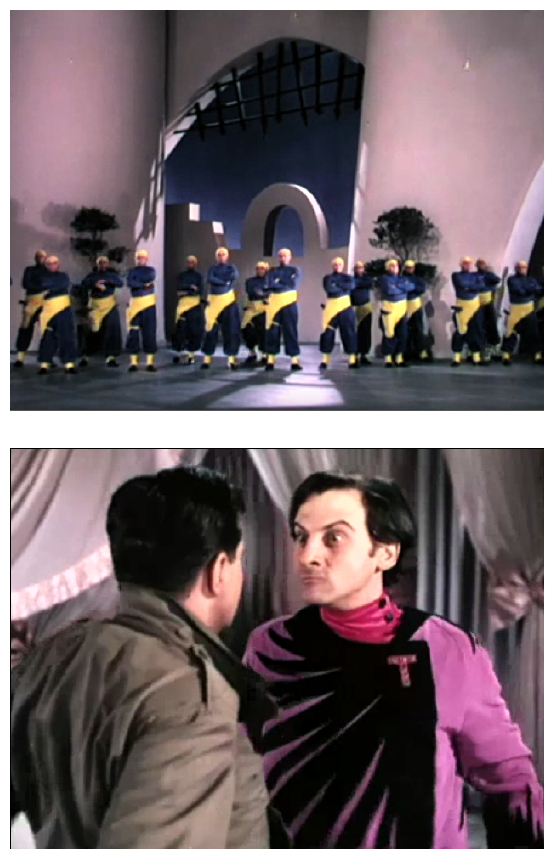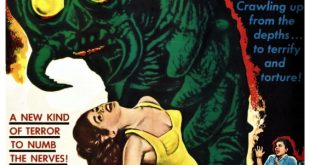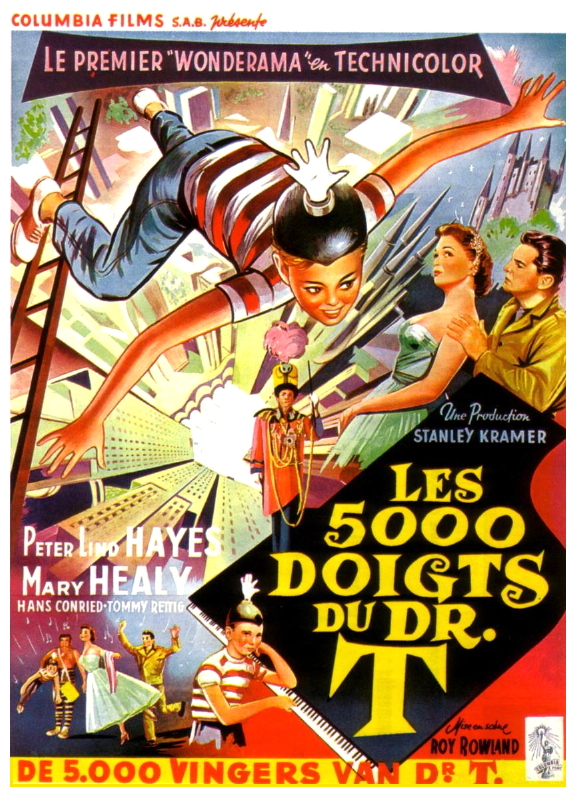 SYNOPSIS:
SYNOPSIS:
“The bane of adolescent Bart Collins’ existence is the piano lessons he is forced to take under the tutelage of Dr. Terwilliker, the only person he admits he detests because of his dictatorial nature. Bart feels Dr. Terwilliker has undue influence for these lessons on his widowed mother, Heloise Collins. The one person who sympathizes with Bart, although quietly on the sidelines, is the Collins’ plumber, August Zabladowski. Bart hates his life associated with the piano so much he often daydreams when he practices and even during his lessons. His latest dream has him imprisoned in the fantastical Terwilliker Institute in the day before its grand opening. Terwilliker’s second in command at the Institute is his mother, although she has been hypnotized into her position, which will also soon be as Mrs. Dr. Terwilliker. Bart tries to convince Mr. Zabladowski, who is there to install the Institute’s plumbing, to save his mother and himself from Terwilliker. Bart also hopes that Zabladowski will become his father instead of Dr. Terwilliker. But Bart wants more than anything to ruin the Institute’s grand opening, which has at its core Bart and 499 other boys like him playing one large piano simultaneously to a tune composed and directed by the evil Dr. T.” (courtesy IMDB)
REVIEW:
Producer Stanley Kramer enjoyed flying in the face of Hollywood convention, usually benefiting from his audacious thematic gambles with films such as High Noon (1952), On The Beach (1959), Judgment At Nuremburg (1961) and Guess Who’s Coming To Dinner (1967). One of his rare missteps is The 5,000 Fingers Of Dr. T. (1953), an ambitious attempt to bring the peculiar sensibilities of Theodor Geisel, better known as Doctor Seuss, to the big screen. Seuss presented Kramer with a huge 1200-page script for a live-action film concerning themes of world dominance and oppression in the wake of World War Two, including guidelines for certain sets, props, costumes, even choreography. Character actor Hans Conreid was ecstatic to be cast in the lead as Dr. Terwilliker: “I had never had any such part before, never have since and probably never will again. We rehearsed for eight weeks before I was engaged to shoot for eight weeks, an extravagance that I as a bit player had never known. If it had been a success, with my prominent part in the title role, it would have changed my life.”
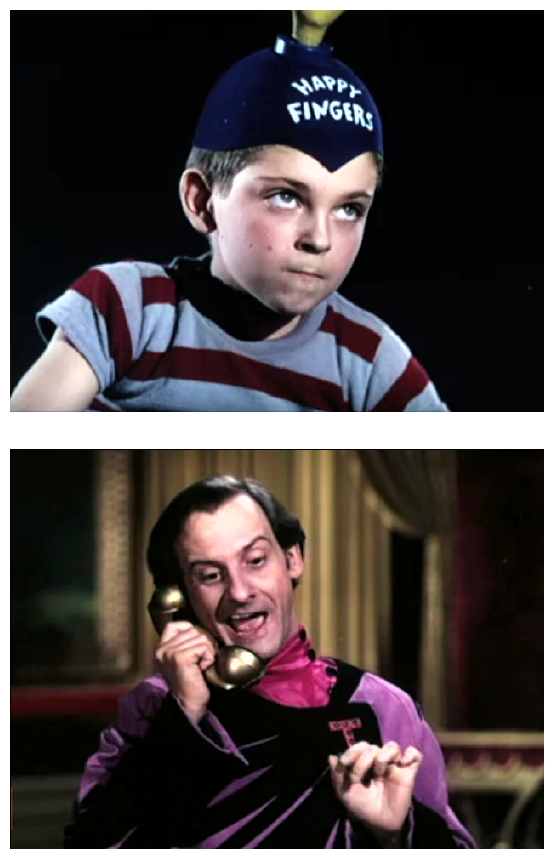 And there’s the rub. Loudly despised by the very artist whose imagination it celebrates, this Technicolor fantasy was unleashed upon a pragmatic fifties viewing audience to disastrous results. For many years it was a handy metaphor for total commercial and critical meltdown at the movies, the Gates Of Heaven (1978), the Ishtar (1987), the Waterworld (1995), the Gigli (2003) of its day. Then, perhaps not surprisingly, this tarred-and-feathered mega-flop made a comeback, regarded by some people as the invisible fantasy classic of the fifties. Almost everybody who saw it liked it, but almost nobody ever saw it. Film prints existed, but they were rarely screened, and could be caught occasionally on weekend afternoon television. Its reputation grew, and a hipper, sharper generation far more open to abstraction saw in The 5,000 Fingers Of Dr. T. an irreverent reworking of the Wizard Of Oz (1939) formula, given added coolness by a touch of self-aware parody and just a little zany sadism.
And there’s the rub. Loudly despised by the very artist whose imagination it celebrates, this Technicolor fantasy was unleashed upon a pragmatic fifties viewing audience to disastrous results. For many years it was a handy metaphor for total commercial and critical meltdown at the movies, the Gates Of Heaven (1978), the Ishtar (1987), the Waterworld (1995), the Gigli (2003) of its day. Then, perhaps not surprisingly, this tarred-and-feathered mega-flop made a comeback, regarded by some people as the invisible fantasy classic of the fifties. Almost everybody who saw it liked it, but almost nobody ever saw it. Film prints existed, but they were rarely screened, and could be caught occasionally on weekend afternoon television. Its reputation grew, and a hipper, sharper generation far more open to abstraction saw in The 5,000 Fingers Of Dr. T. an irreverent reworking of the Wizard Of Oz (1939) formula, given added coolness by a touch of self-aware parody and just a little zany sadism.
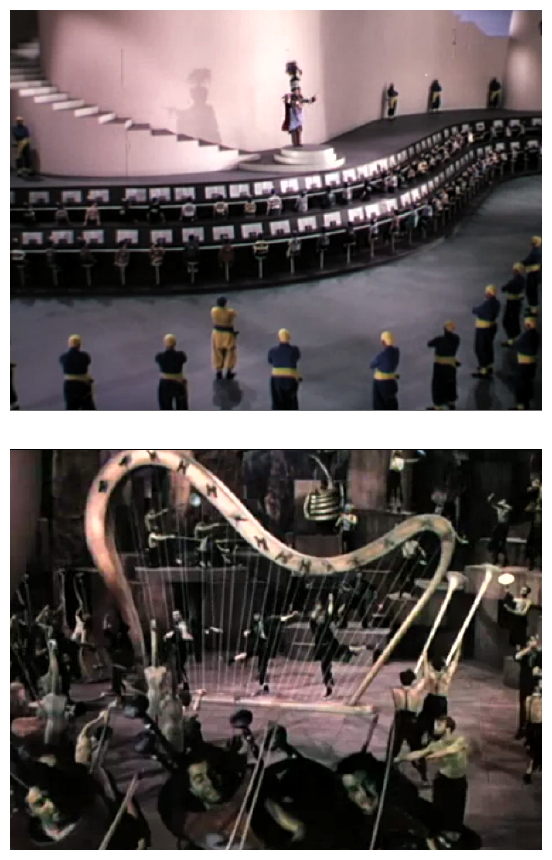 The film presents itself as a small boy’s nightmare, and Seuss was astute enough to know that children are more interested in nightmares than dreams. Conreid plays the sadistic piano teacher who kidnaps children (especially those who are lazy about practicing their scales) and uses them as slaves in the fantastic kingdom he rules. Dr. T. has vicious thugs who make sure the children stay in line and cannot escape the surreal labyrinthine castle (watch for the anti-communist propaganda as the children are turned into obedient automatons by red smoke). It really is an odd film indeed, it’s no wonder a cult has formed around it. The musical numbers sometimes slow it down, but the warped inventiveness of the sets alone should ensure it some sort of immortality among aficionados of the fantastic, the work of art director Rudolf Sternad based on Suess’s own guidelines and sketches.
The film presents itself as a small boy’s nightmare, and Seuss was astute enough to know that children are more interested in nightmares than dreams. Conreid plays the sadistic piano teacher who kidnaps children (especially those who are lazy about practicing their scales) and uses them as slaves in the fantastic kingdom he rules. Dr. T. has vicious thugs who make sure the children stay in line and cannot escape the surreal labyrinthine castle (watch for the anti-communist propaganda as the children are turned into obedient automatons by red smoke). It really is an odd film indeed, it’s no wonder a cult has formed around it. The musical numbers sometimes slow it down, but the warped inventiveness of the sets alone should ensure it some sort of immortality among aficionados of the fantastic, the work of art director Rudolf Sternad based on Suess’s own guidelines and sketches.
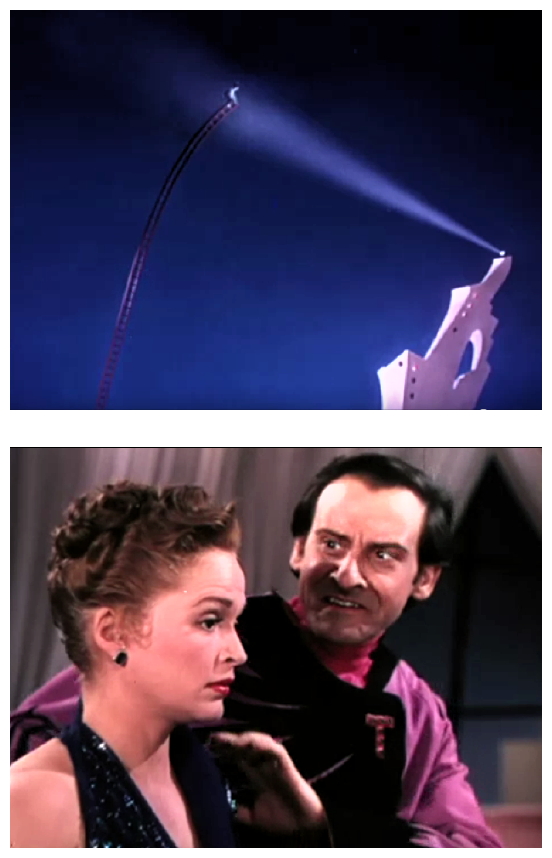 Particularly notable is the world’s largest piano, on which the 5,000 fingers of the 500 kidnapped children have to toil. Directed by Roy Rowland with cinematography by Franz Planer, the film features music by Frederick Hollander, Hans J. Salter and Heinz Roemheld, boasting precious lyrics by Seuss himself. The songs were celebrated by Hollywood’s inner circle, even garnering an Oscar nomination, no easy trick for a movie this hated. Hitting all the right notes, the soundtrack is often satiric, occasionally sentimental, always clever and lush. This tale is about music after all, enabling Hollander and Seuss to fully embrace orchestral creativity in the context of a child’s wild dream.
Particularly notable is the world’s largest piano, on which the 5,000 fingers of the 500 kidnapped children have to toil. Directed by Roy Rowland with cinematography by Franz Planer, the film features music by Frederick Hollander, Hans J. Salter and Heinz Roemheld, boasting precious lyrics by Seuss himself. The songs were celebrated by Hollywood’s inner circle, even garnering an Oscar nomination, no easy trick for a movie this hated. Hitting all the right notes, the soundtrack is often satiric, occasionally sentimental, always clever and lush. This tale is about music after all, enabling Hollander and Seuss to fully embrace orchestral creativity in the context of a child’s wild dream.
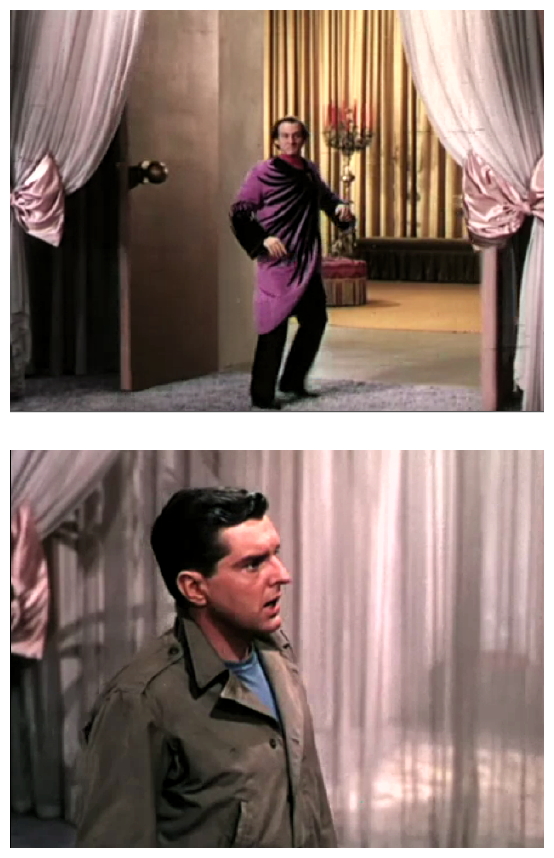 When Bart is taken to the dungeon via elevator, there is no reference to a third floor dungeon by the Elevator Operator. The third stanza of the song was cut due to increasingly horrific lyrics: “Third floor dungeon, household appliances, spiked beds, electric chairs, gas chambers, roasting pots and scalping devices.” As Dr. T. keeps musicians of every stripe imprisoned in his colourful catacombs, the potential for some astonishing imaginatively-staged performances is literally built into the film’s premise. The good doctor’s ‘Dress Me Up’ ditty, a showcase for star Hans Conreid‘s offbeat talents, was eventually embraced and parodied on The Simpsons. This is no great surprise, as creator Matt Groening counts himself among Dr. T’s many latter-day fans, in fact the character of Sideshow Bob Terwilliger was named after the villainous Terwilliker.
When Bart is taken to the dungeon via elevator, there is no reference to a third floor dungeon by the Elevator Operator. The third stanza of the song was cut due to increasingly horrific lyrics: “Third floor dungeon, household appliances, spiked beds, electric chairs, gas chambers, roasting pots and scalping devices.” As Dr. T. keeps musicians of every stripe imprisoned in his colourful catacombs, the potential for some astonishing imaginatively-staged performances is literally built into the film’s premise. The good doctor’s ‘Dress Me Up’ ditty, a showcase for star Hans Conreid‘s offbeat talents, was eventually embraced and parodied on The Simpsons. This is no great surprise, as creator Matt Groening counts himself among Dr. T’s many latter-day fans, in fact the character of Sideshow Bob Terwilliger was named after the villainous Terwilliker.
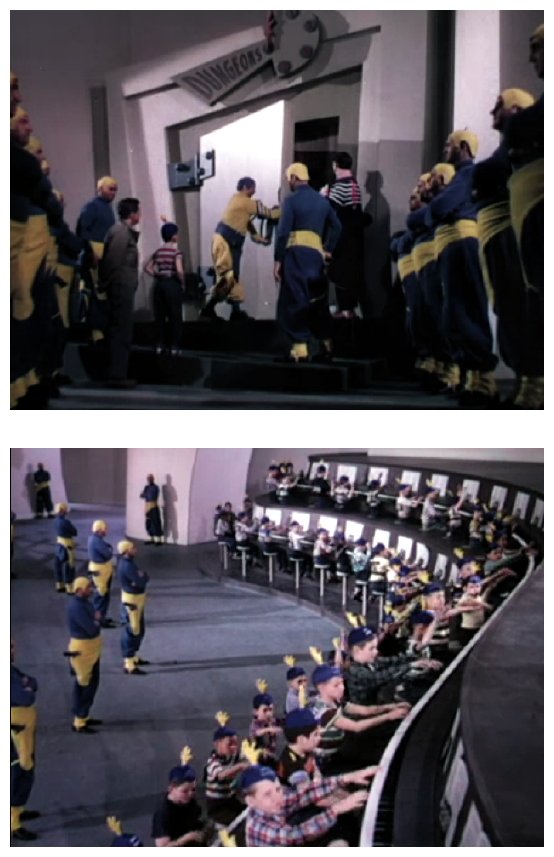 In addition to picture-perfect Conreid, little Tommy Rettig from the Lassie television series is a believable Bart Collins (his name an anagram of ‘Brat’) while real-life husband-and-wife Peter Lind Hayes and Mary Healy are just fine as sympathetic parental figures. Deranged yet delightful, a Hollywood mega-flop that continues to win over admirers in the 21st Century, The 5,000 Fingers Of Dr. T. is one film that should never be remade, it’s simply not necessary. The amazing experience we already have is a testament to endearing strangeness, so just leave ‘weird enough’ alone, okay? With this thought in mind I’ll politely ask you to please join me again next week when I have the opportunity to present you with more unthinkable realities and unbelievable factoids of the darkest days of cinema, exposing the most daring shriek-and-shudder shock sensations to ever be found in the steaming cesspit known as…Horror News! Toodles!
In addition to picture-perfect Conreid, little Tommy Rettig from the Lassie television series is a believable Bart Collins (his name an anagram of ‘Brat’) while real-life husband-and-wife Peter Lind Hayes and Mary Healy are just fine as sympathetic parental figures. Deranged yet delightful, a Hollywood mega-flop that continues to win over admirers in the 21st Century, The 5,000 Fingers Of Dr. T. is one film that should never be remade, it’s simply not necessary. The amazing experience we already have is a testament to endearing strangeness, so just leave ‘weird enough’ alone, okay? With this thought in mind I’ll politely ask you to please join me again next week when I have the opportunity to present you with more unthinkable realities and unbelievable factoids of the darkest days of cinema, exposing the most daring shriek-and-shudder shock sensations to ever be found in the steaming cesspit known as…Horror News! Toodles!
 Horror News | HNN Official Site | Horror Movies,Trailers, Reviews
Horror News | HNN Official Site | Horror Movies,Trailers, Reviews
